Advantages and features of early raspberry varieties
Raspberries are grown throughout the country: in the Urals and Siberia, in the Moscow region and the Leningrad region. Red and pink berries are pleasing to the eye - even a small raspberry tree will decorate a garden or personal plot. Of the variety of varieties, summer residents especially distinguish early and super-early raspberries - the harvest is harvested by mid-summer. They make winter preparations from raspberries or eat the berries fresh. Let's look at the earliest raspberry varieties, their advantages and features.
The best varieties of early raspberries
Raspberry varieties differ from each other in taste, fruit size, and ripening time. Some berries are famous for their sweet pulp, others for their refreshing and sour taste. Large fruits often found at the market or in the store, small ones are used to make jam or marmalade.
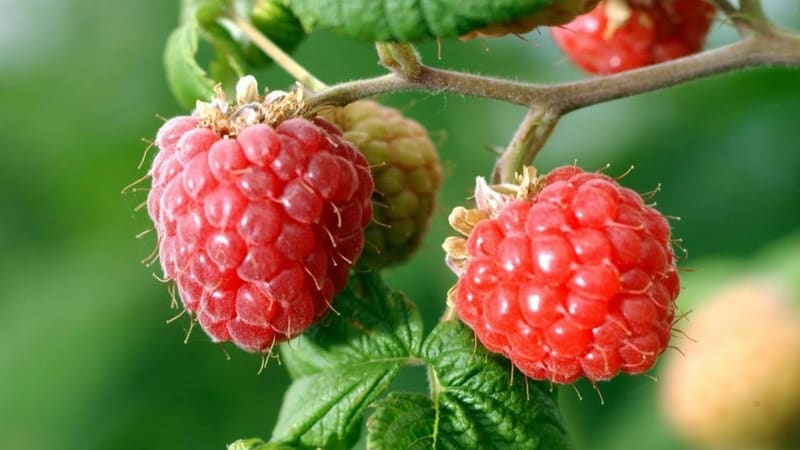
Large-fruited
Large and juicy raspberries will decorate any garden. The weight of the fruit reaches 10-12 g, they are distinguished by attractive commercial qualities.
Aborigine
The berries are large, weight varies from 8 to 14 g, conical shape, slightly oblong. The pulp is aromatic, sweet and sour, with a pleasant aftertaste. The color of the berries is raspberry-red, the berries have slight pubescence. Summer residents harvest up to 8 kg of harvest from one bush over the summer. The plant is medium-sized, up to 2 m high. Aborigine raspberries are valued not only for their large berries, but also for their lack of thorns - it is impossible to scratch your hands during harvesting. The native rarely gets sick and is resistant to powdery mildew. Raspberries are frost-resistant, so they are grown in the middle zone, in the Urals and in Siberia.
Canadian
Tall bushes, up to 2 m, standard. Many summer residents plant a tree-like bush as a decoration for their garden plot. The weight of the berry is up to 10 g, the pulp is juicy and sweet, the color is raspberry with a pinkish tint. The fruits are transportable and universal in use - suitable for fresh consumption and processing. Housewives add sweet berries to baked goods, prepare mousses and jams from them, and make liqueurs and tinctures. The yield of Canadian raspberries is from 7 to 12 kg per plant per season. Canadian is drought-resistant, but its frost resistance is average.
Marlborough
An early ripening unpretentious variety. The bush is upright, 2.5 m high. The shoots are elastic and flexible, the thorniness is medium, the leaves are light green. The weight of the berry is 7-10 g, the pulp is dense and fleshy, the taste is pleasant, moderately sweet. The berries are eaten fresh or used for cooking. Productivity is up to 13 kg per bush per season. Marlboro raspberries are distinguished by strong immunity to diseases and pests; they are grown for personal and industrial purposes.
The sweetest early raspberries
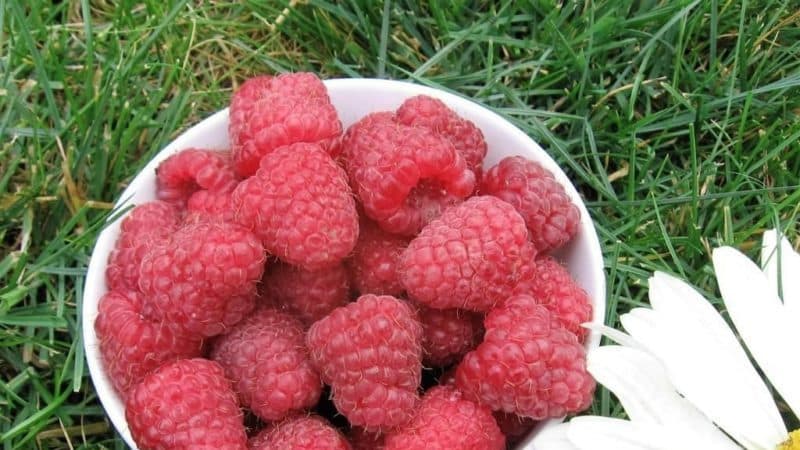
Sweet and aromatic raspberries are eaten fresh or ground with sugar and added to tea. If you follow the rules of planting and care, a tasty harvest will ripen in June - July. The main thing is not to forget about regular watering, fertilizing and pruning the bushes.
Caramel
Remontant universal grade. The spininess is average, the shoots have a waxy coating, there is no pubescence. The weight of the berry is 4-8 g, the color is red, the pulp is sweet and juicy, the aroma resembles wild raspberries. Tasting rating of Caramel - 4.6 points out of 5. Drought resistance is average, immunity to pests is standard. The yield of Caramel is up to 5 kg per plant.During transportation, the berries retain their appearance and taste. The fruits do not fall off and are stored for a month after harvesting.
Scarlet Sails
The winter-hardy variety is unpretentious in care, so Scarlet Sails are grown even in regions with an unstable climate. The bushes are erect and semi-spreading, about 2.2 m high. The thorniness is weak, adult shoots are prone to branching. Fruiting occurs in early or mid-June. The weight of the berry is about 3 g, the color is rich ruby, the shape is conical. The taste is harmonious, sweet with a refreshing aftertaste. The flesh is tender, there are small seeds. Ripe fruits do not crumble or crack after ripening, so they are easily transported.
Patricia
Gardeners have been growing Patricia raspberries for more than 30 years. The bushes are upright, up to 1.8 m high. The leaves are medium-sized, slightly wrinkled, shoots with a waxy coating.
In central Russia Patricia bears fruit in early or mid-June. The weight of the fruit is from 5 to 12 g, the color is raspberry-red, the surface is velvety. The shape is conical, the flesh is tender, melts in your mouth. The taste is sweet and aromatic. Productivity is about 5 kg per bush per season. It is recommended to consume Patricia raspberries fresh or send them for processing immediately after picking. The berry is not suitable for storage and transportation.
Attention! Raspberries are a moisture-loving crop, so if there is a lack of moisture, the leaves dry out and the fruits slow down in development. If watering is carried out on time, but the bushes still dry out, it means that the plant is damaged by gall midges. The pest lays larvae on the leaves that eat the raspberries. In this case, it is recommended to cut out all infected shoots and burn them.
Disposable raspberry
Disposable is an ordinary raspberry that bears fruit once a year. It requires the least amount of care and attention, but is characterized by stable productivity.
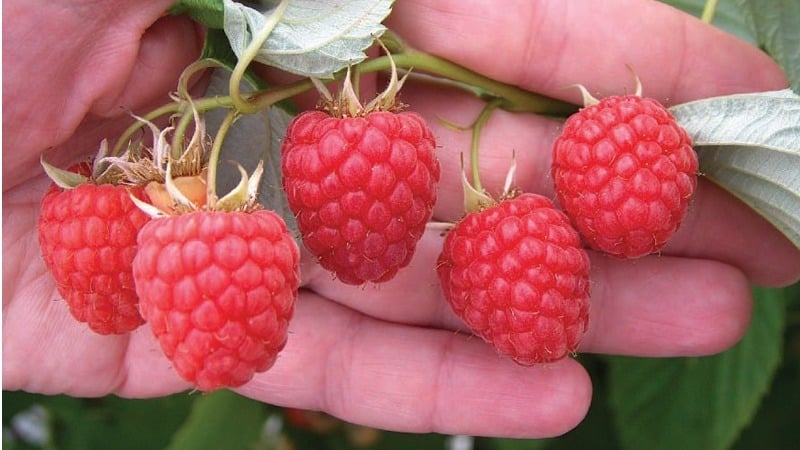
Bryansk Cascade
An early-ripening winter-hardy variety recommended for planting in the Central region. Resistant to fungal diseases. Productivity is from 3 to 5 kg per season. The bushes are medium-sized, about 2 m high, compressed. The thorns are short and thin, the leaves are large. The shape of the berries is blunt-conical, weight - about 3 g, color red. The pulp is sweet and sour and aromatic, tasting score - 4.1 points out of 5. Bryansky Cascade is resistant to spider mites and spotting, suitable for transportation, and universal in use.
Fugitive
The bushes are medium-sized, slightly spreading, the thorniness of the shoots is weak. The berries are round-conical in shape, attractive, golden-apricot in color. The taste is sweet and sour with a delicate aroma, the flesh is tender, the seeds are small. The average weight of the berry is about 2.5 g. The Beglyanka raspberry is valued for its original color and ease of cultivation. The berries are not used for transportation - the raspberries lose their taste and marketability and crack.
Arbat
The large-fruited and sweet variety Arbat is loved by gardeners all over the country. The weight of the fruit reaches 10-15 g, the shape is elongated-conical, the color is rich red. The berries are dense and elastic, retaining their shape and taste after harvest. Raspberries are easily removed from the stalk. The height of the bushes is up to 2 m, the shoots are strong. The fruiting period is extended - from the end of June to the beginning of August. The berries are good fresh, boiled or dried. The yield of the variety is about 5 kg of berries annually.
Remontant varieties
Remontant raspberries are the most productive - the shoots bear fruit several times a year.Most varieties of remontant raspberries are large in size and have pleasant pulp with a sweet taste.
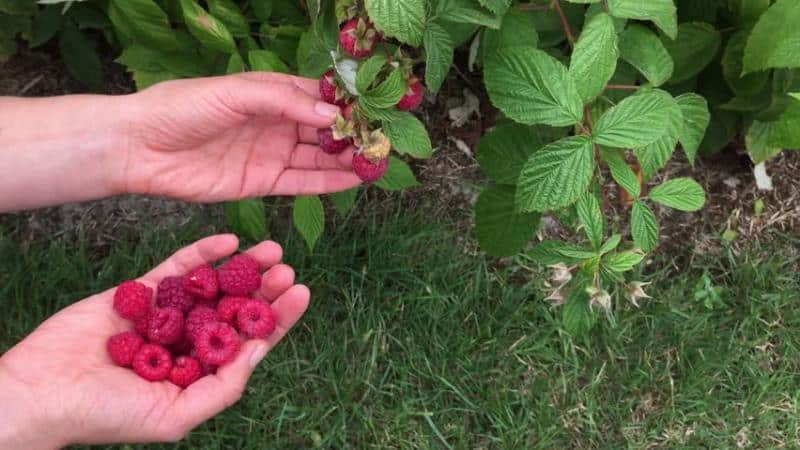
Penguin
Standard bushes, low and compact, up to 1.3 m high. The shoots are light brown, the thorniness is medium. The berries are large, weighing 4-6 g, wide-conical in shape, easily separated from the stalk. The color is dark crimson, there is slight pubescence on the surface. The pulp is sweet and sour, without aroma. Productivity - up to 15 kg per season. Remontant raspberry Penguin is rarely affected by diseases or pests and is unpretentious in care. The berries do not fall off, so they can be easily transported over long distances.
Shelf
The fruits are large and beautiful, the weight of the berry is about 4 g. The color is red-raspberry, even. The pulp has a dense consistency, the taste is sweet and delicate. One bush produces up to 1 kg of raspberries, the fruiting period is from 1 to 3 months. Flexible shoots do not break under the weight of the fruit, and the berries do not rot after harvesting and retain their taste and shape. Raspberry Polka is resistant to diseases and is universal in use. The bushes of the variety are medium in size, semi-spreading, thorniness is below average.
Paradisaic delight
The universal variety is frost-resistant, so Paradise Delight raspberries are grown in all regions of Russia. Frost resistance - down to -35°C. The fruits are large, weighing 7-10 g. The shape is conical or truncated conical, the color is bright red, shiny. The taste is sweet and sour, balanced. The yield of remontant raspberries is 4-5 kg per bush. To increase productivity, it is recommended to plant raspberries in well-lit garden areas. Due to lack of light and heat, the taste of berries decreases.
Attention! During fruiting, remontant raspberries need abundant watering.Summer residents carry out the procedure in the morning or evening to avoid sunburn and use water at room temperature. And to prevent the appearance of powdery mildew or gray rot, spray the bushes with Bordeaux mixture or copper sulfate solution.
Super early raspberry varieties
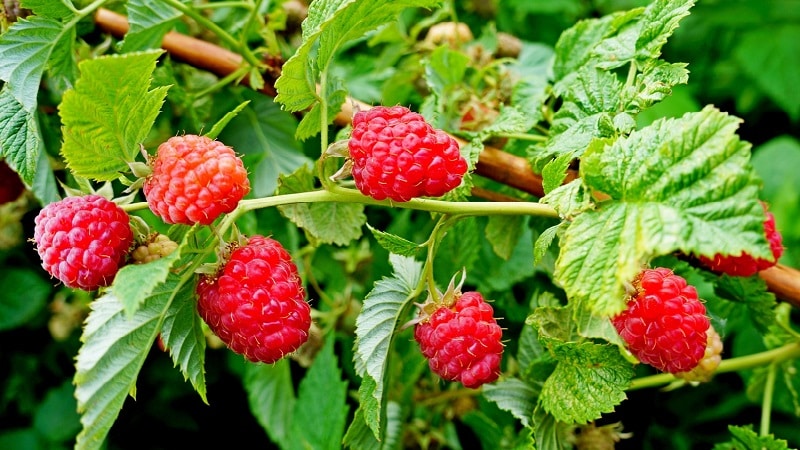
These raspberry varieties tolerate transportation well, so gardeners grow them for personal use and sale.. One of the common varieties is Gusar. Recommended for planting in the Central, Middle Volga, Northwestern regions. The bushes are tall, powerful, spreading. The thorns are medium and straight, the shoots are strong. The weight of the berry is about 3.2 g, the shape is blunt-conical, the color is red. The taste of raspberries is sweet and sour, pleasant, with a rich berry aroma. Tasting score: 4.2 points. Gussar raspberries retain their taste and aroma when cooked and canned.
Another ultra-early raspberry variety is Vera. Resistant to shoot gall midge, rarely affected by fungal diseases. The berries ripen together and do not fall off. The bushes are semi-spreading and medium-sized, with soft thorns located throughout the shoot. The berries are small, weighing 1-2 g. The shape is blunt-conical, the color is purple. The pulp is sweet and sour, tasting score - 3.5 points. Raspberries Vera are grown in the West Siberian region.
Description of the raspberry variety Early Surprise
The famous raspberry variety Early Surprise attracts with its fast ripening time, appearance, ease of care and planting.
Appearance
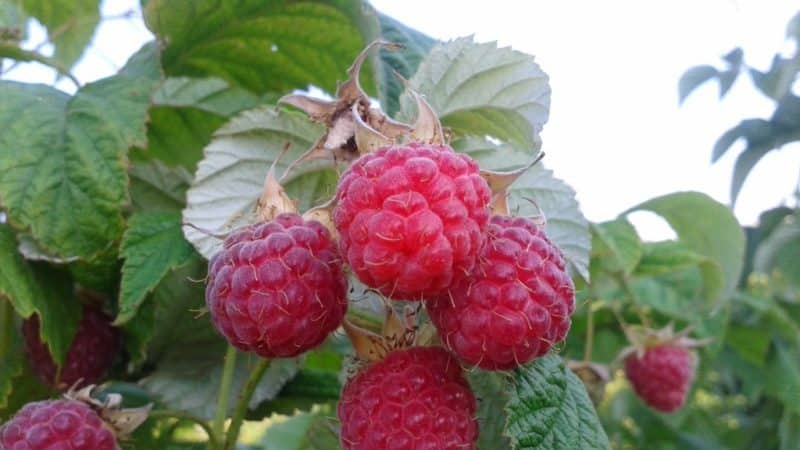
The bushes are medium-sized, 1.8-2 m high. Shoot-forming ability is good, the shoots are straight, with a waxy coating. Many short black thorns, medium-sized flowers. The leaves are wrinkled and dark green. The weight of the berry is from 2 to 4 g, the shape is elongated-conical, the color is dark crimson. The pulp is dense.The taste is sweet and sour, pleasant.
Characteristics
Early Surprise is self-fertile, the fruiting period begins at the end of June. Due to average resistance to frost, it is recommended to cover the bushes for the winter. The berries are not transportable, so they are more suitable for fresh consumption or processing. Early surprise rarely gets sick, which increases the number of ripe and tasty fruits.
Features of cultivation
When planting raspberries, it is important to pay attention to the soil - Early Surprise bears fruit on neutral and slightly acidic soils. A sunny and spacious area is dug up and organic fertilizers are applied. It is not recommended to plant raspberries after tomatoes, potatoes or strawberries - these crops suffer from the same diseases, which increases the risk of the development of bacteria and fungi.
Several times a year, summer residents carry out pruning - they shorten old shoots and remove shoots. After planting, fruiting shoots are shortened by 20-25 cm. Pruning increases the productivity of the plant and serves to prevent the appearance of pests. Summer residents also devote time to weeding and mulching. These procedures prevent the appearance of diseases and insects and maintain favorable microflora.
Attention! in spring Early surprise is fed with mullein diluted with water in a ratio of 1:10. Before loosening, old raspberry fields are fertilized with mineral nitrogen fertilizers. At the end of the summer season, dry wood ash is added - this ensures the sweet taste of the berries next year.
Conclusion
The Canadian and Aborigine raspberry varieties delight summer residents with their largest sizes (fruits reach 14 g), and Patricia and Caramelka with very tasty and aromatic pulp. Among the earliest ripening varieties, Gusar and Vera are distinguished.They are used for transportation and sale, bear fruit consistently and are easy to care for. It is also recommended to pay attention to the raspberry variety Early Surprise - self-fertile, high-yielding, tasty and attractive.